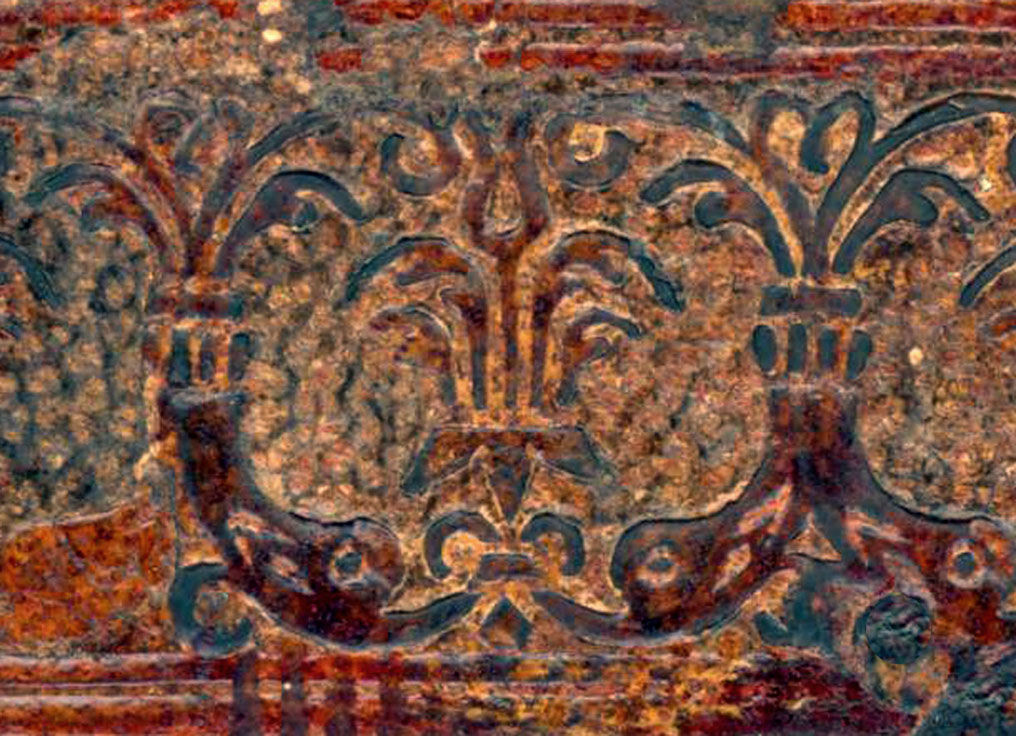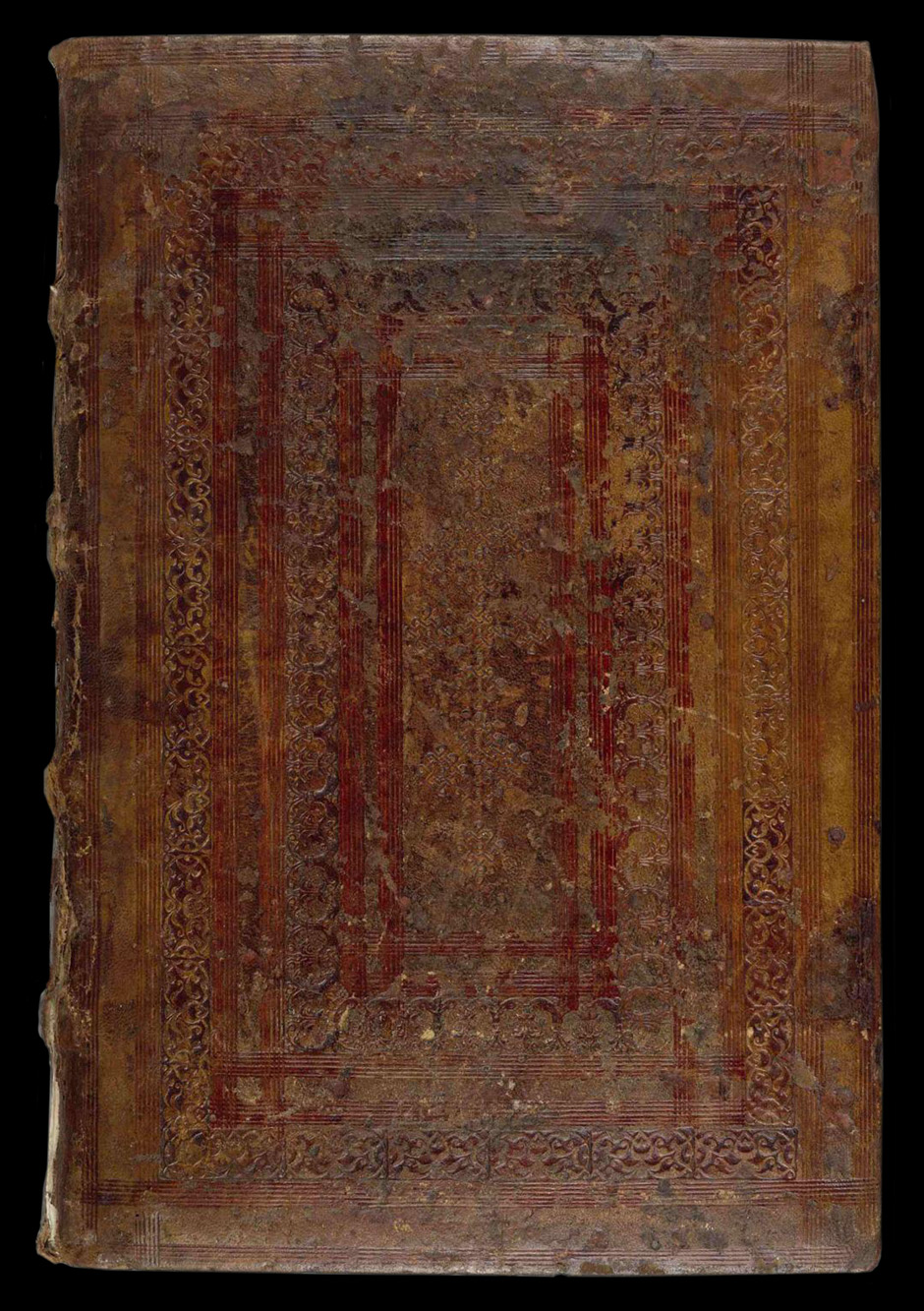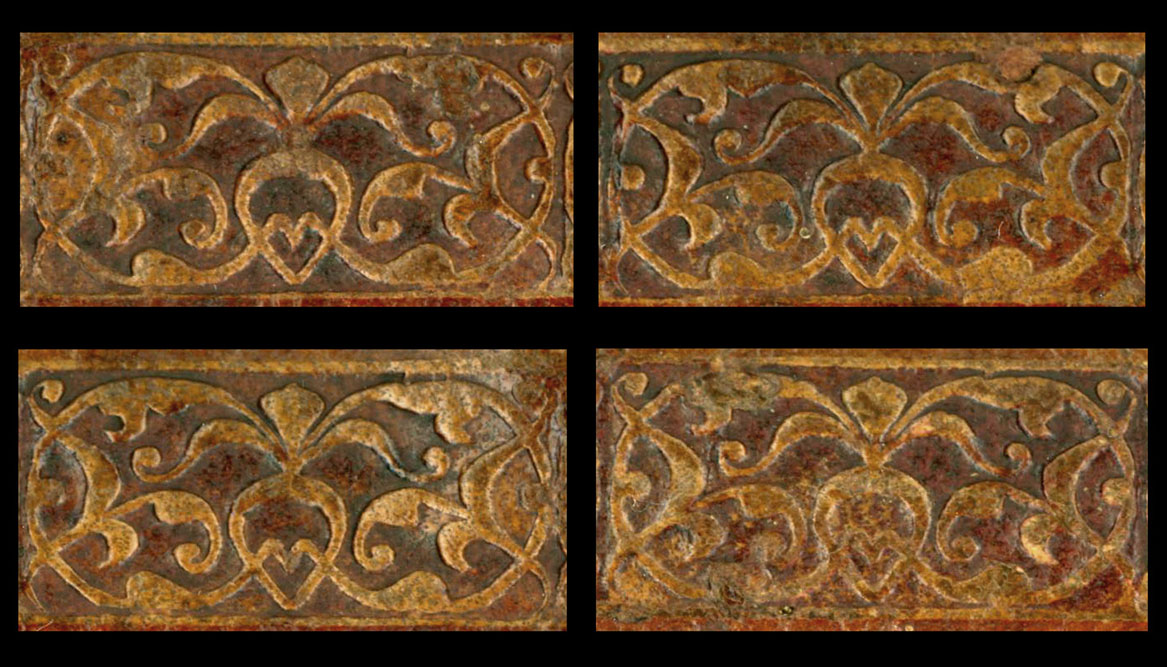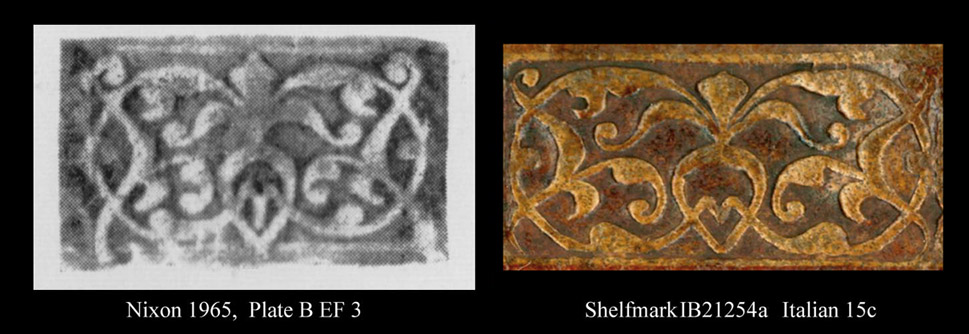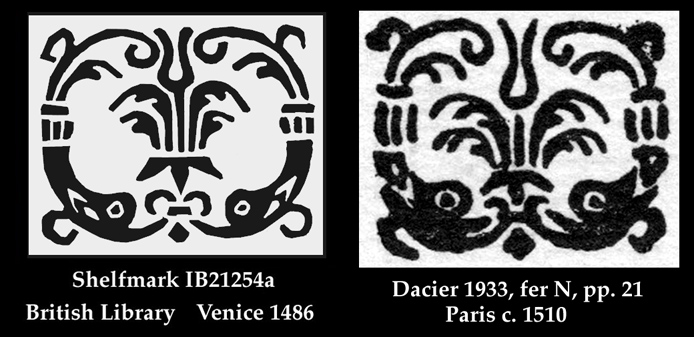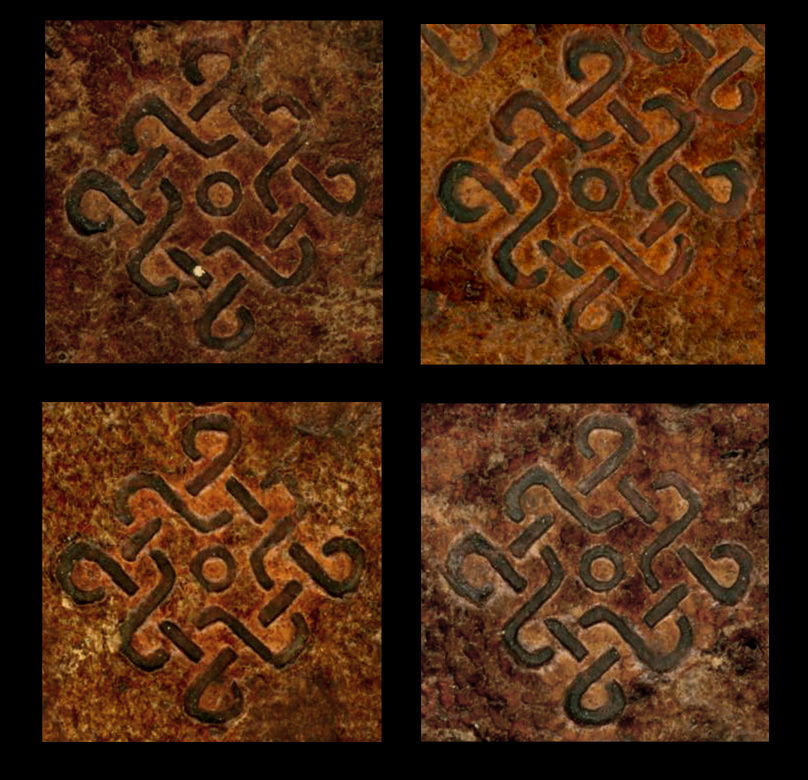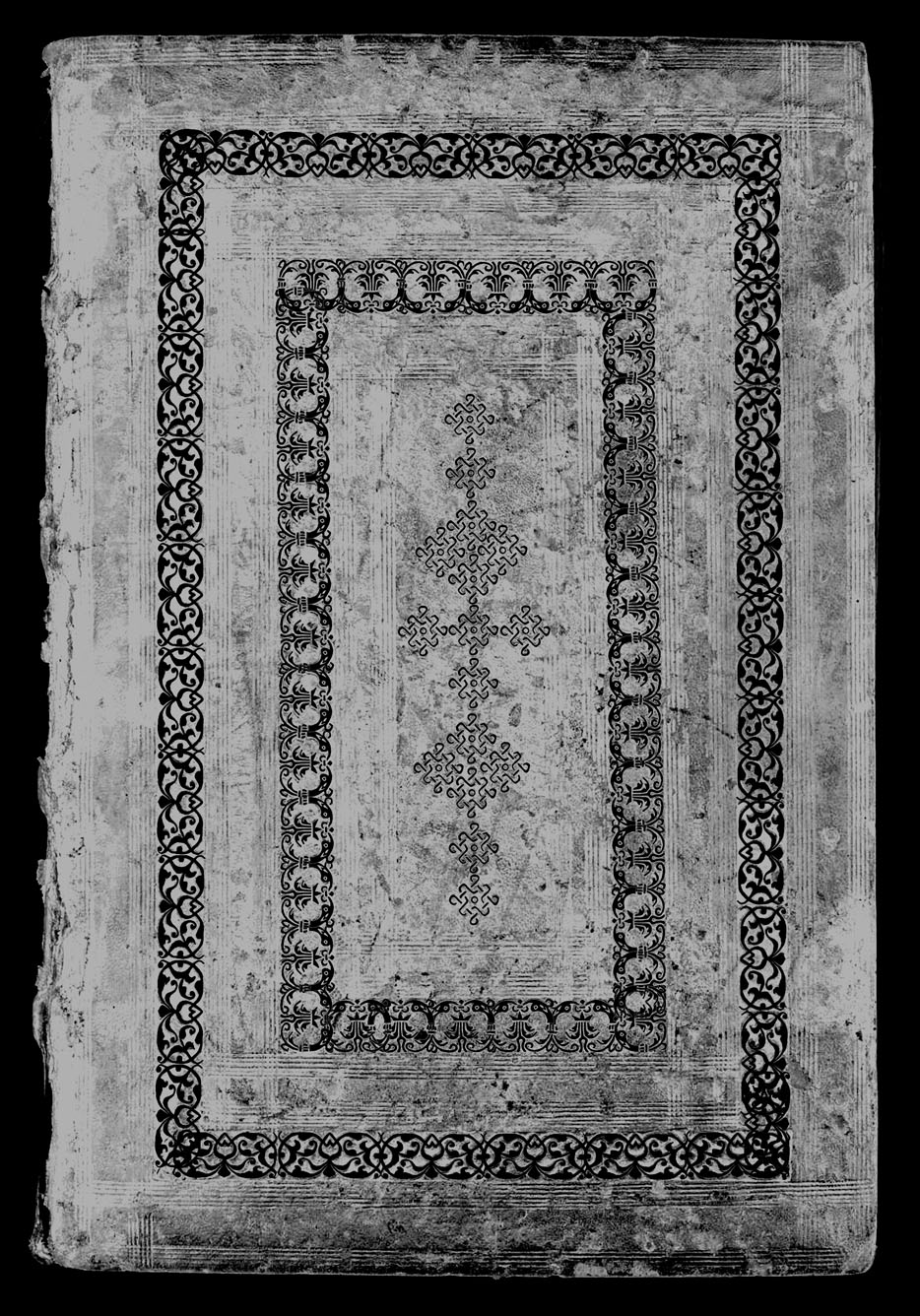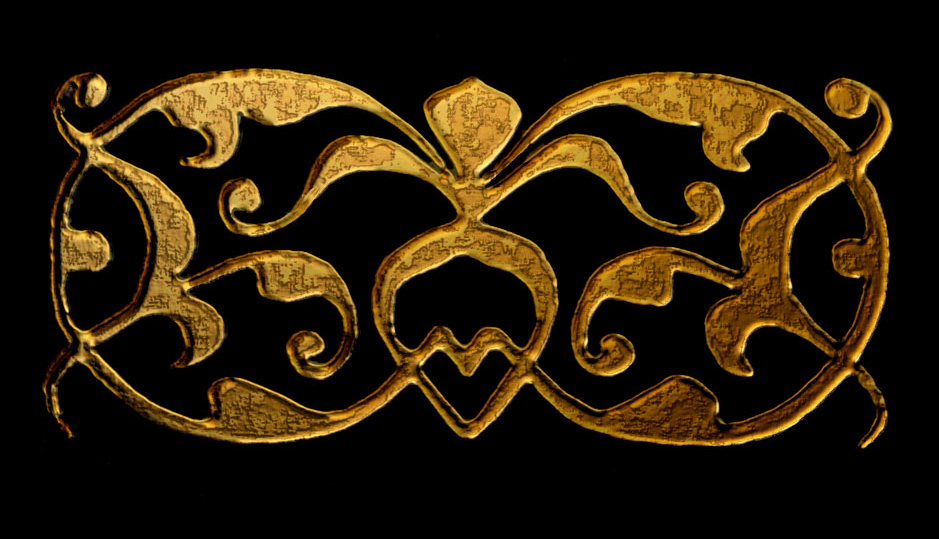|
I discovered these diving dolphins on a ancient 15th century Italian binding that is perhaps from Venice. The reproduction of it can be found in the British Library Database of Bookbindings. Fortunately the Curator of Bookbindings, Philippa Marks was kind enough to send me a high resolution scan of the parts where there still remains some evidence of the tooling. We can see that it has been decorated with the so called dolphin frame that we have been discussing in the last few pages. This binding is found on a 1486 Venice printing of:
Thomas Aquinas. Super primo libro Sententiarum Petri Lombardi Venice : by Antonius de Strata, de Cremona, 21 June 1486. As the dolphin motifs that make up the frame differ in some minute details from our Louis XII example of c 1510 (see below), it may be that this binding was made in Venice not long after the 1486 printing. On the other hand this binding may not have been made in Venice at that date, a lot more research is needed before we can make such pronouncements. I think that the three main imprints found here may prove to be very helpful in pinning down a date and place.
|
